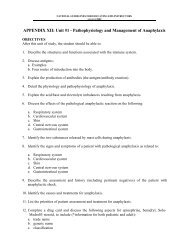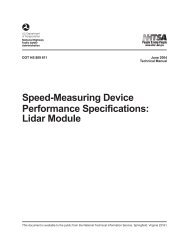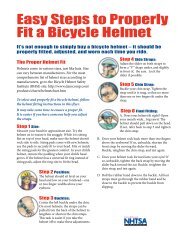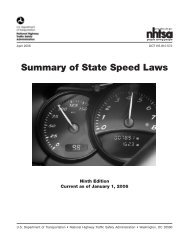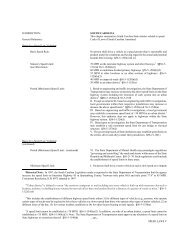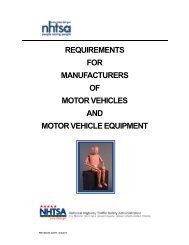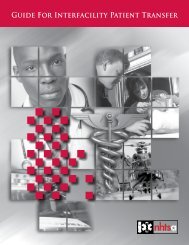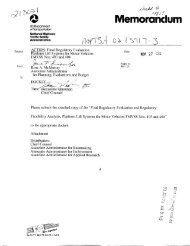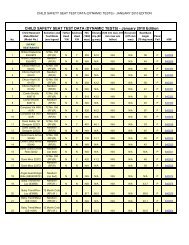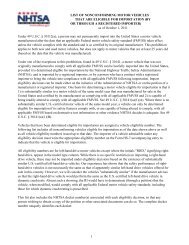Standard Practice for Emergency Medical Dispatch ... - NHTSA
Standard Practice for Emergency Medical Dispatch ... - NHTSA
Standard Practice for Emergency Medical Dispatch ... - NHTSA
You also want an ePaper? Increase the reach of your titles
YUMPU automatically turns print PDFs into web optimized ePapers that Google loves.
7. The ability to elicit and assimilate caller in<strong>for</strong>mation and then to<br />
prioritize and appropriately consolidate and summarize this<br />
in<strong>for</strong>mation in a <strong>for</strong>mat used to in<strong>for</strong>m and direct public safety<br />
responders.<br />
7. Orientation Guidelines <strong>for</strong> <strong>Emergency</strong> <strong>Medical</strong> <strong>Dispatch</strong>ers<br />
1. When an individual has successfully completed the initial EMD training<br />
and is employed by an emergency medical dispatch agency, a<br />
comprehensive orientation program must be in place to initiate this<br />
individual to the intense and demanding conditions that exist in<br />
dispatch centers. It must include:<br />
1. An orientation manual <strong>for</strong> the new EMD;<br />
2. A <strong>for</strong>mal orientation <strong>for</strong> the new EMD in the communications and<br />
dispatch operation as well as the employing agency as a whole<br />
including all relevant policies, practices, and procedures.<br />
3. Orientation should continue with a one-on-one preceptor concurrent<br />
with the employee’s probationary period;<br />
4. Written evaluation of compliance should be per<strong>for</strong>med through the<br />
agency's quality assessment practice as defined in this practice; and<br />
5. Written evaluation of per<strong>for</strong>mance during orientation and frequent<br />
feedback and critique from those individuals responsible <strong>for</strong> training<br />
and evaluation of the new emergency medical dispatcher.<br />
8. Per<strong>for</strong>mance Evaluation<br />
1. The EMD must function using a medically approved EMDPRS to<br />
establish the template <strong>for</strong> per<strong>for</strong>mance and protocol compliance<br />
evaluation. The ongoing per<strong>for</strong>mance appraisal must evaluate the<br />
EMD’s ability to follow and comply with the established agency policies<br />
and procedures.<br />
2. Established per<strong>for</strong>mance criteria should be shared with new employees<br />
and measured on a regular basis. These should include evaluation of<br />
per<strong>for</strong>mance in:<br />
1. Con<strong>for</strong>mance to established policies of the employing agency, and<br />
2. Compliance with the EMDPRS of the employing agency.<br />
1. Per<strong>for</strong>mance appraisal of the EMD through case review:<br />
1. Multiple cases that an individual manages must be reviewed on a<br />
regular basis.<br />
2. The selection of cases to be reviewed should provide a perspective of<br />
the individual’s per<strong>for</strong>mance over the entire spectrum of call-types<br />
received. The review process should, as a minimum, review 7 to 10%<br />
of calls received by the emergency medical dispatch agency.<br />
3. Individuals per<strong>for</strong>ming dispatch case reviews must have an emergency<br />
medical background (preferably experienced at an ALS level) and be<br />
specially trained in the process of EMD case review.<br />
4. This reviewer shall use a standardized case review template <strong>for</strong>m that<br />
objectively outlines and quantifies all parameters of EMDPRS<br />
compliance by which the EMD will be evaluated.<br />
5. Records must be kept showing at a minimum the following areas of<br />
compliance:<br />
66



